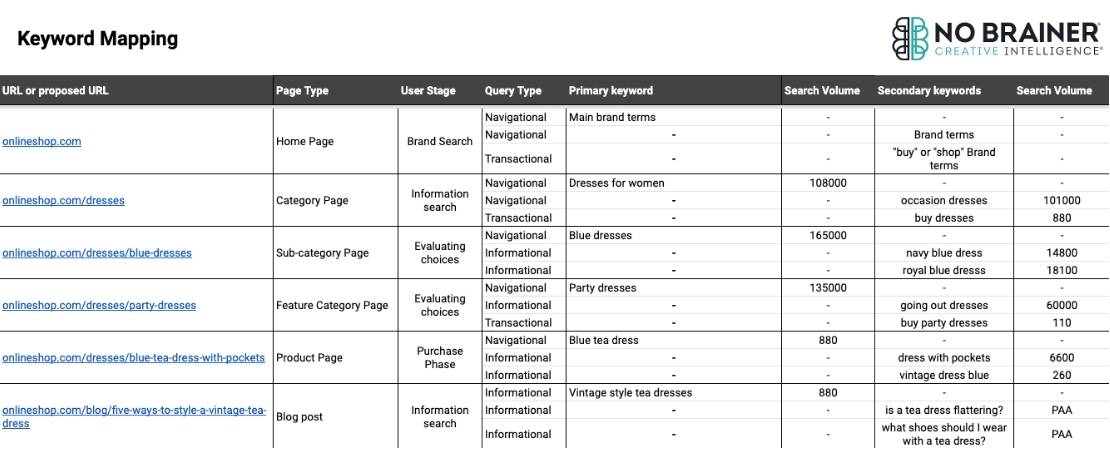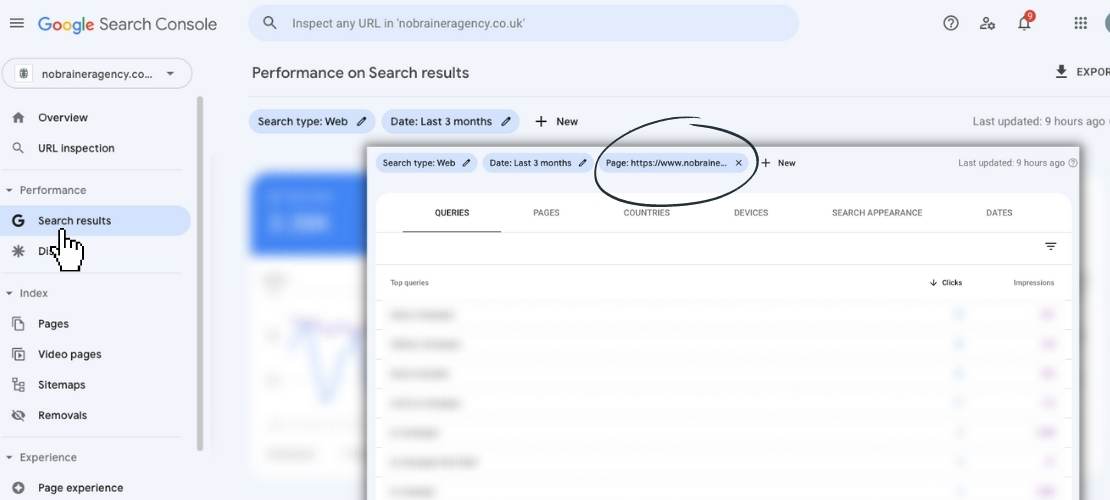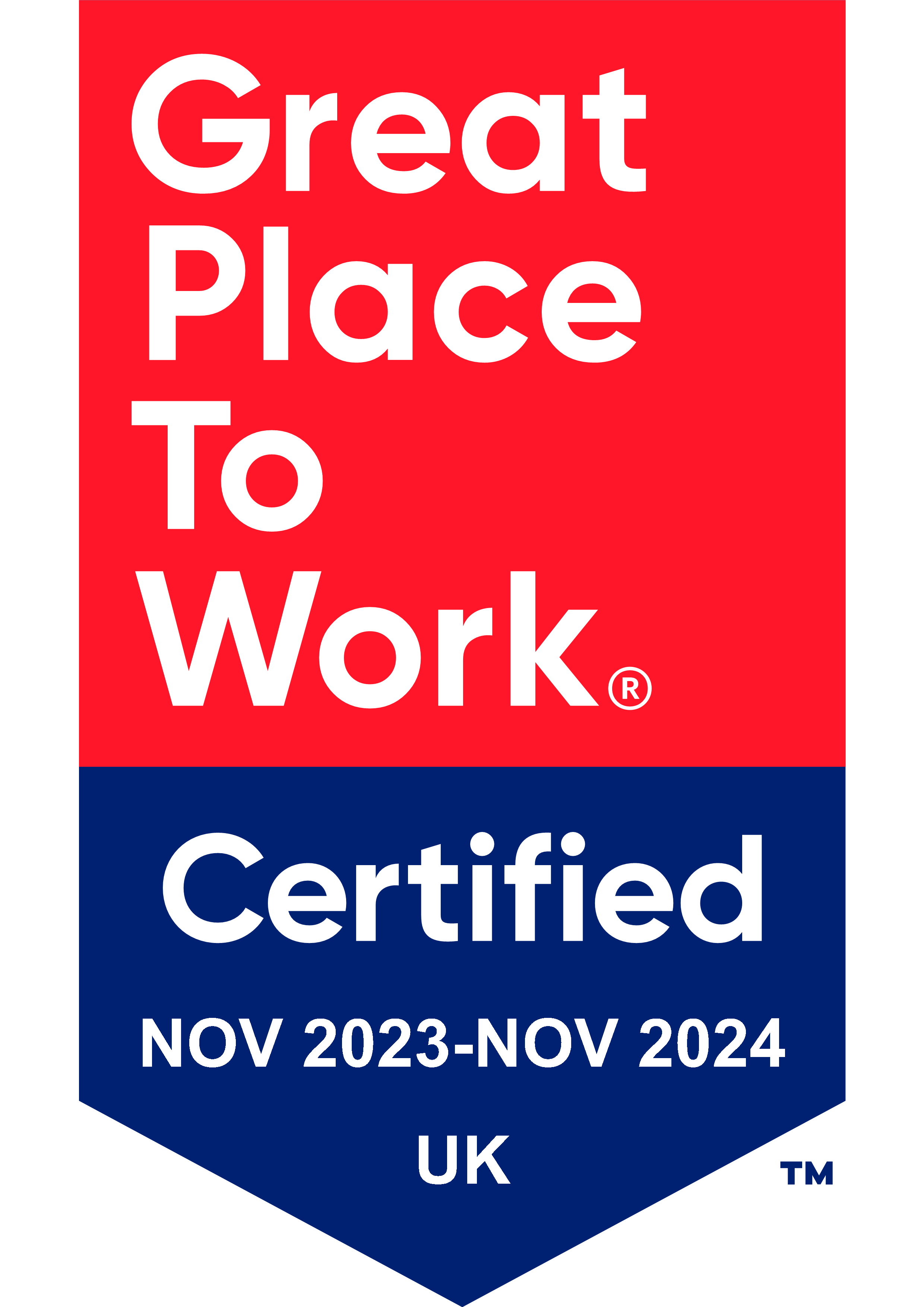When it comes to ecommerce SEO, whether you’re working on an existing website or launching a new one, getting your keyword strategy right can make a world of difference to your success.
As well as identifying the most effective keywords for your ecommerce site as a whole, establishing the right pages to target specific keywords is essential.
Why is keyword mapping important?
- It helps searchers get to the information they’re looking for quickly and easily when they land on your website
- It helps you avoid duplicating the same keywords across multiple pages. Which essentially has you competing with other pages on your own website for the same keywords (which can often result in the ‘wrong’ page ranking, or no pages ranking for the terms at all). Avoiding this will give you a better chance of ranking for your chosen terms on the intended pages and deliver a more consistent and joined-up experience for users
- It helps ensure that the most relevant keywords (to the intent of the searcher) are mapped to pages that meet their informational needs at the right stage of the buyer journey, to provide a more relevant and smoother experience overall as they move towards making a purchase
- It can help to highlight gaps in your website content and structure for important stages of the buyer journey that aren’t currently being met
- It can help to establish the ‘best’ pages to build backlinks into and can guide your internal linking strategy (which is so important!).
How to approach keyword mapping for a new ecommerce website
If you’re starting entirely from scratch, with a brand-new ecommerce brand and domain, you will approach keyword mapping differently to how you would if it was an established site.
As with all effective SEO strategy, the place to start is with the target audience and the user journey. Understanding how your audience search at every stage of the process will help you determine which keywords to use, ranging from top of the funnel generic terms, through any research stages and onto keywords with transactional intent.
Depending on what you sell, your potential customers won’t just be looking for the products themselves, they’ll be searching by feature and type as well as appearance. Understanding how this all feeds into the journey and their search behaviour will help you pin down the types of information you’ll need to deliver in order to meet their needs, and what pages/content you’ll need to create to support their journey.
Looking at what your direct competitors rank for, on what pages, and how they support the user journey through their site structure and content can be a good starting point, but in order for you to start outperforming them from an SEO point of view, you’ll need to offer users something even better and unique.
Keyword mapping for an existing ecommerce website
If your ecommerce site already ranks organically, it’s really important to review this properly before coming up with a new keyword mapping strategy, so that changes you might make don’t inadvertently cause your current traffic to drop off a cliff.
There are lots of paid tools you can use to help you quickly discover the keywords (and the respective pages) that you rank for, such as Moz, Semrush and Ahrefs. For large websites, this is usually the best route because the information is easy to access and export for analysis. For small sites, a more time consuming but free choice is through Google Search Console.
Simply go to the Search Results tab under Performance, then click on individual pages from the list and look under the QUERIES tab to see which search terms that page is visible for on Google organic results – and in what position, so you can monitor your success!
When you have a good understanding of what you’re currently ranking for on specific pages, you can review whether the pages offer the best possible information for users at their stage in the buyer journey, based on their search intent. If you already are, that’s great. If not, perhaps that query would be better answered by another page on your site or a new page you can create to meet that need.
Putting all of this information in a spreadsheet and seeing how well your website pages currently meet the needs of your users along all stages of their journey is an important stage of the process because it’ll help to highlight gaps in your structure where you’re potentially missing opportunities. This gives you a good starting point for a new keyword mapping strategy.
Keyword mapping best practices
- The keywords mapped to each page (preferably 2-3) need to relate specifically to the search intent of the users and the information that the page delivers.
- As a general rule (although there are exceptions, of course), long tail descriptive keywords tend to work best when mapped to product pages and supporting pages, such as blogs, with more generic terms mapped to category pages. There may also be subcategories or feature categories to consider, depending on what you sell.
- Each page should have a primary keyword, which you feel is the most important search query for that page to rank for. This is not necessarily the one with the highest average search volume. It might be, or it could be a long tail keyword that perhaps has lower search volume but shows a high level of buying intent and is likely to convert well. This primary keyword will usually be the one that you’ll include in your page title, meta description and H1.
- Secondary keywords will support the theme of the page and also appeal to the same stage of user and their search intent. These can be used within content on the page (ideally in H2s or H3s) to help let search engines understand their importance in relation to the page and content.
- Any single keyword should only be mapped to one page to avoid pages working against each other.
- Once you’ve mapped relevant keywords to your existing pages, review your potential keyword list and see if there are any opportunities for popular and high-intent keywords that you’re not currently providing useful information in response to. If they don’t naturally map to an existing page, then can you create a new page to meet this informational need? This might be a static page or could sometimes be better as a blog post or part of a guide series or FAQs.
- Don’t forget about People Also Ask (PAA) and featured snippets on your product pages – these can also be mapped to a relevant existing page or targeted on a new one.
- Related and supplementary pages can all link internally to each other, preferably using the primary keyword of the target page as anchor text in each case, to help search engines see how they all relate to each other in context and showing the importance of the primary keyword to the content served on each linked page.
Free keyword mapping template
Our free template provides a framework for first looking at how your existing pages and ranking keywords stand and cover the user journey, as well as providing a starting point for any new pages you want to add to fill gaps that drive people towards purchase.

If you’d like some support with your ecommerce SEO strategy, we’d love to chat. Get in touch using the form below.








